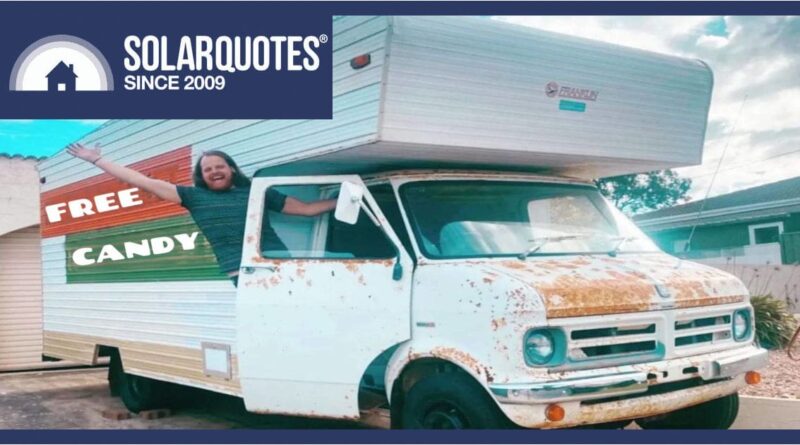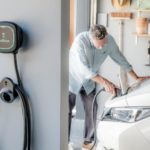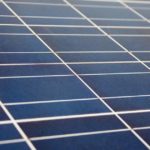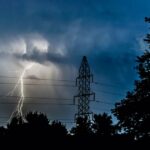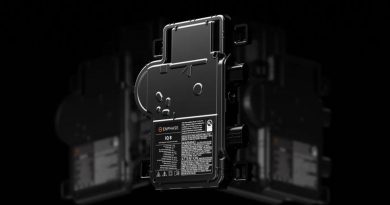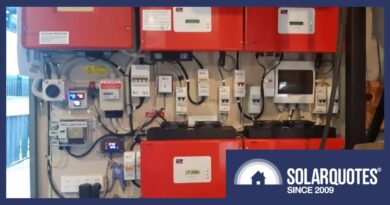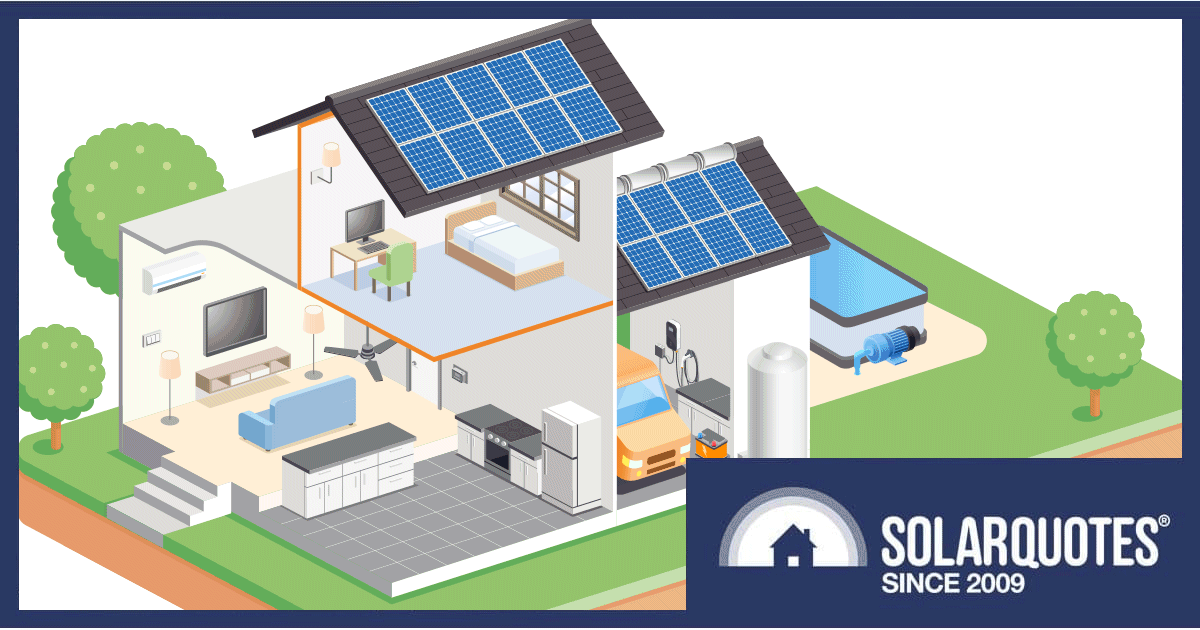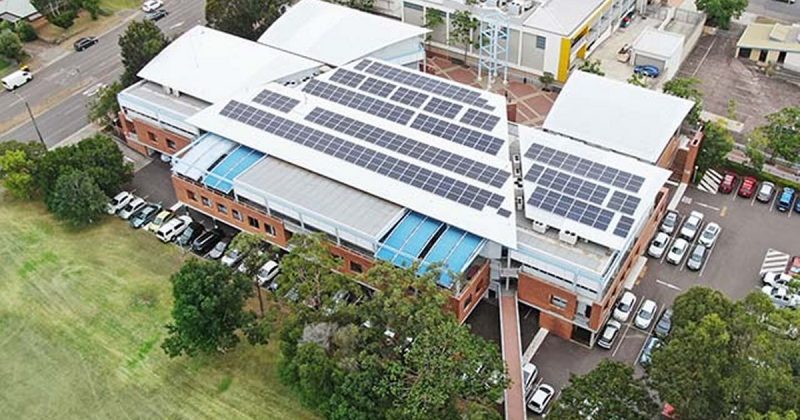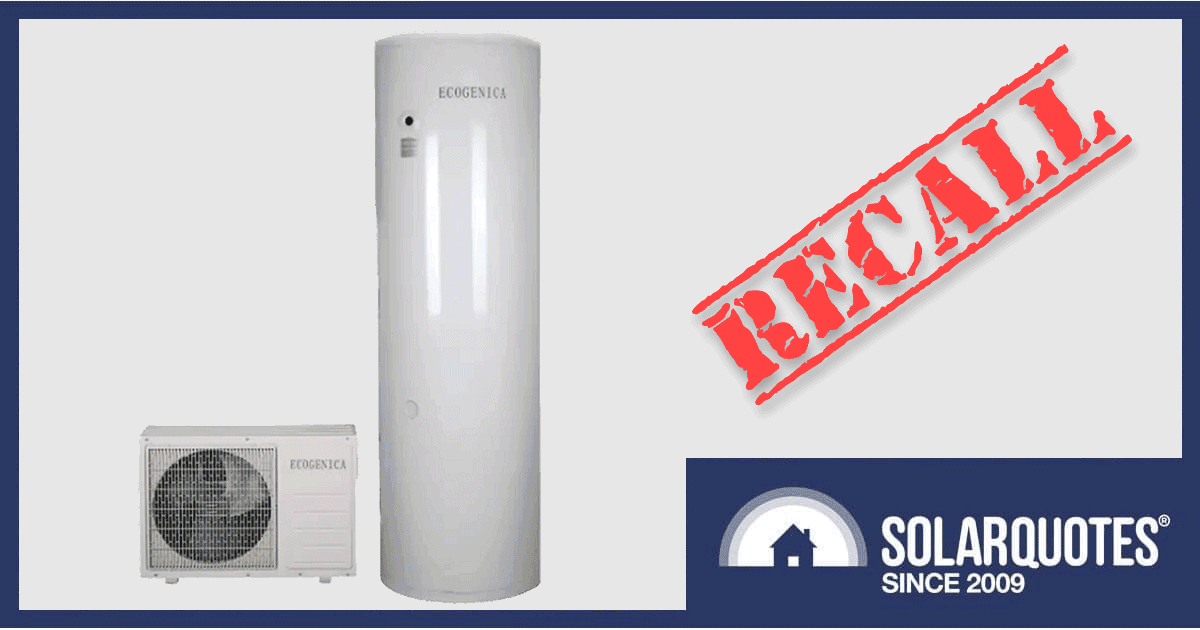How To Safely Add Solar Power To Your Caravan, RV Or Camper
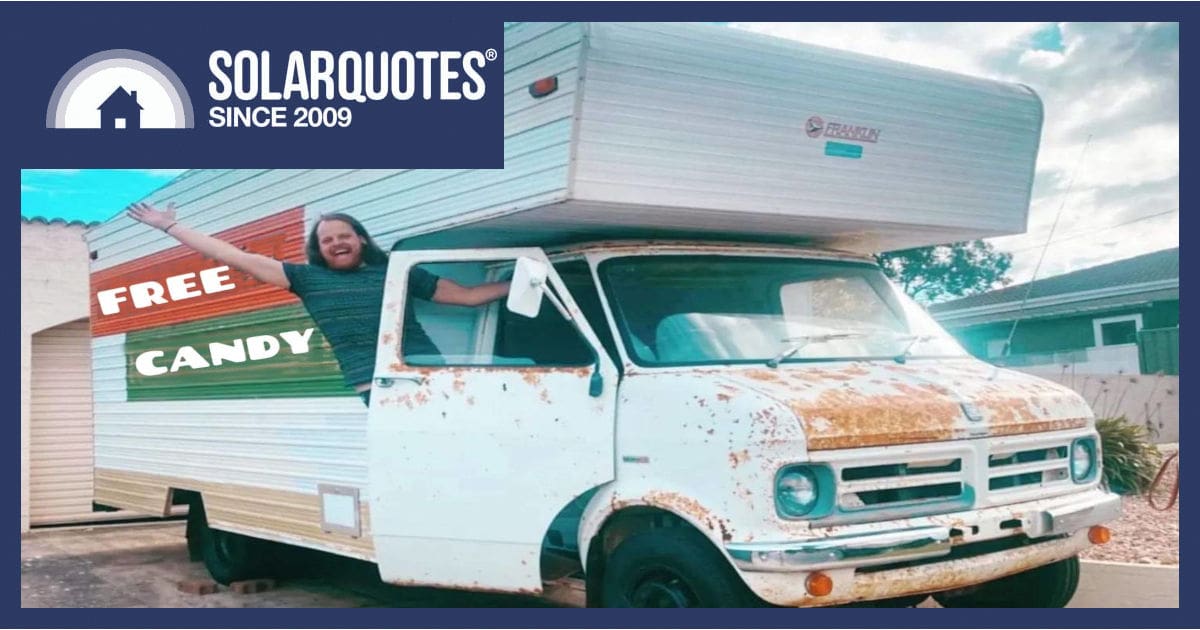
At SolarQuotes, we often field inquiries about remote-area solar power systems, and increasingly, we’re seeing interest in their little brothers, too: off-grid systems for buses, caravans, RVs or trendy tiny houses.
In this article, I’ll outline how to add solar panels to your caravan or RV, wire that solar power throughout your van, and stay safe while you do so.
Modern Motorhome Solar Is Nothing Short Of Amazing
Not only are solar panels cheap, but the range of inverters, MPPT regulators and lithium solar batteries is so incredibly capable you’ll readily run a camper without any bottled gas. In fact, the fishos love induction hobs. They’re compact, easy to clean, and there’s no flame to blow out when you’re trying to cook on the beach.
LPG may still be a useful option, but knowing what we do now about indoor air quality, I think it’s just best avoided.
Where mobile living can really fall down is thermal efficiency. Vehicles are hard to insulate sufficiently, so extremes in temperature and condensation control can be challenging. A sizeable battery could power your air conditioning overnight, but sometimes, a 20-metre extension cord and a small petrol generator can be indispensable (albeit costly and not always permissible).
Uncomplicating Things Starts At Home
Caravans, campervans and blinged-up buses can be expensive, so many people do the work themselves.
I’ve seen first-hand how DIY conversions can provide a deep sense of satisfaction. One of the best blokes I ever worked with had a Coaster bus with a sink, car fridge and hammock. The warm plywood lining and hand-finished detail made it beautifully simple. His morning commute was ten metres, and he took his whole house on weekend adventures with a kayak.
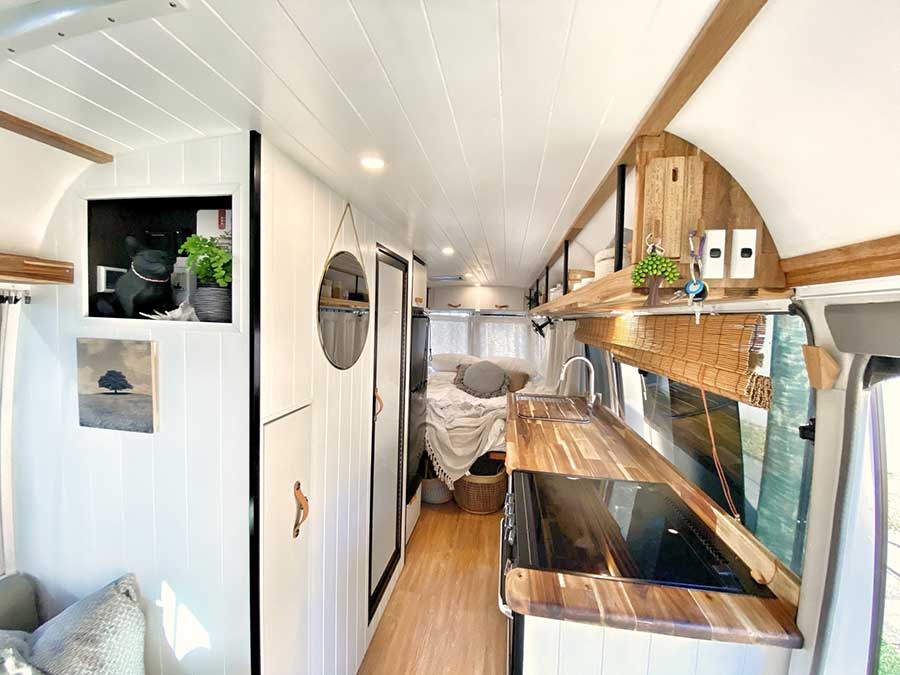
Not my mate’s one, but a nice converted Coaster Bus from Camplify
The internet is awash with products and guides for setting up a serious caravan or camper, but always tread carefully with DIY electrical work. Some might say it’s safe, claiming “12 volts never killed anyone”, but bad wiring can still do you some damage or start a devastating fire.
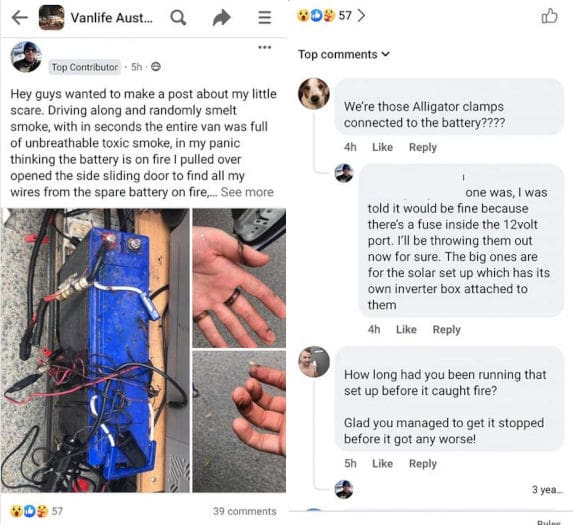
Connected with alligator clips for no less than three years. I’m not surprised to see those burns.
You’ll Need Plenty Of Amps
Adding up the capacity you’ll need can be daunting, but remember, having some spare capacity is priceless. Your fridge might draw 5 amps but need 10 amps to start, and cycle on more often when it gets hot. Luckily, modern lithium batteries mean you can add more capacity pretty easily if you need to expand later.
Beware The 12-Volt Mafia
Though they come in small, convenient sizes, nominal 12-volt solar panels are pricey. And (like most things found on eBay), 12 volt appliances and solar regulators are often poor quality.
Having a dual battery in your car running some interior lights, a laptop and a car fridge is fine, however, my general rule of thumb is: if it’s got a cigarette lighter plug, forget about it.
I’ve seen amazing caravans based on 12 volt equipment. In fact, some of the best batteries I’ve ever seen are made in Melbourne. However, to quote PowerPaul himself:
The main thing people seem to get wrong, is they see YouTubers doing a 20-minute video and think everything is an easy ‘plug’n’play’ setup, but when they go and buy the stuff shown in a video, they find that they need a bunch of tools to fit it, and then a whole lot of technical knowledge. That’s where it all goes to crap. People damage things or end up with a system not working well. This is especially true with good quality Victron gear that has pages and pages of settings to tweak, get one of them wrong and the whole system could give you 30% of the performance you expect.
Running a microwave, stove and air conditioner simultaneously creates about three kilowatts of load, meaning the battery has to supply 260+ amps for the duration. That crazily high current will create a lot of heat if you have a poor connection.
So, while it might be legal to do it yourself, it takes a lot of talent and experience to manage the multiples of everything from fat cables to parallel batteries, circuit protection and solar charging.
While 12v systems seem native in a 12v vehicle, they don’t really make sense any more. Car alternators never really charged deep-cycle lead acid batteries properly, and modern lithium batteries are a completely different kettle of fish.
24 Volts Is Better Than 12 Volts
Medium and heavy vehicles use 24 volts because they need a quarter1 the copper cabling of a 12v vehicle to do the same job. The same logic applies to mobile solar power systems.
With 24 volts you can have a more capable inverter with greater 230VAC output (over 3kW) and still a good choice of parts if you need to charge from a 12v vehicle or run 12v loads.
But I Would Choose 48 Volts DC
With DC-DC chargers now available, you might as well choose a 48-volt battery and have smaller cables, lower current and a lighter instal. It’s simpler, safer and more capable, and offers a great choice of excellent quality batteries. In fact, a 48v system can scale from 3kW behind the seat of a ute up to 45kW 3-phase and well beyond (if you have houseboat-sized ambitions).
Many vans have a roof-full of skylights and other junk. Clear them off, and you can fit more cheap, conventional solar panels.
Modern solar charge controllers can cope with more voltage from these panels, meaning the same regulator can cope with four times more energy throughput at 48v, than it can on a 12v system.
Mobile Electrical Standards Are Different
Caravan, camper and RV solar power systems fall under AS3001 standards, so your electrician needs to be across that. Everything inside has to be double-pole switched, meaning the style or colour of the actual switches and power points may be quite limited. Flexible cables must be used, not conventional seven-strand house wiring.
Batteries must also be vented to the atmosphere (preferably with a thermostat-activated fan to manage heat), and any access panel to the habitable space inside must be well sealed, labelled and screwed shut. With many people choosing to put electrical and battery storage under the bed, it makes good sense to keep a solid barrier between your battery and your mattress.
While we’re on the subject, it’s good practice to put heavy items like water tanks and batteries over the axle of your van. However, van bodies can have plywood floors, and I have seen first-hand what can happen when a blown tyre rips a wheel arch to pieces.
Sturdy sheet metal linings are a must. You really don’t want a tyre to tear the van apart and cause an electrical fire.
Screw Your Solar Down
Some installers insist that glue is good enough, and refuse to make holes for fear of water leaks. But there is already a documented fatal road accident caused by a solar panel flying off a caravan.
In such a dynamic environment, with heat, vibration, different materials and cyclonic wind speed, you must ensure the panels are mechanically fixed. Driving tek screws straight into the alloy frame (making sure you don’t hit the glass) is a perfectly good way of fitting brackets you can bolt to the roof.
If you have a curved surface, consider using semi-rigid lightweight panels such as Sunman’s. These can be glued all over, reducing the risk of a full detachment if one edge or corner bracket starts to peel.
Stuck to some plywood or honeycomb composite, these lightweight panels are also great for auxiliary solar. If you park your van in the shade, having extra solar panels that can be deployed on the ground ten metres away is priceless.
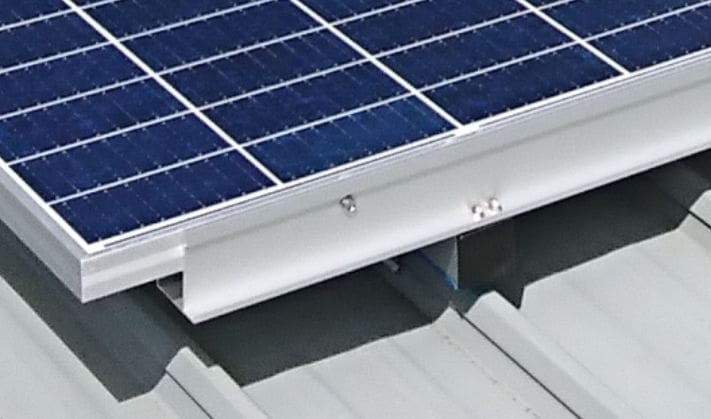
Screws are good.
The Dos and Don’ts of Solar Power On The Road
Electrically, if a system is below 50VAC or 120VDC, then it’s deemed ‘extra low voltage’, and anyone can play with it. However, that doesn’t mean anyone should.
Just because it’s low voltage it doesn’t mean you can’t make expensive mistakes. The worst mistakes result in fires, which can be incredibly dangerous in a confined space.
- Don’t buy a load of cheap equipment and then expect somebody else to install it. Work with the electrician to choose your gear.
- If you intend to use second-hand equipment, get advice to ensure it’s fit for purpose (thin film solar is no good).
- Simplify by using ordinary 230VAC appliances and lights.
- For backup, consider a gas cartridge stove and some rechargeable lights.
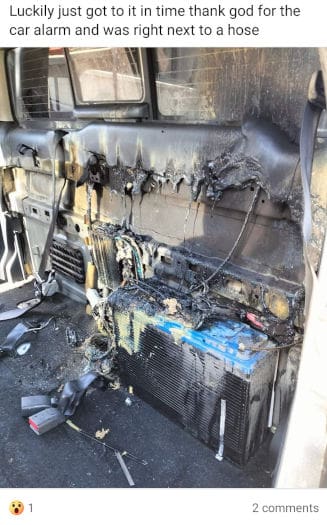
DIY wiring and a cheap lithium battery.
As for the 230V AC wiring in your new mobile abode, don’t take unnecessary risks. That’s definitely still a job for an electrician, who can layout, connect, test and certify.
Original Source: https://www.solarquotes.com.au/blog/solar-power-caravan-camper/

